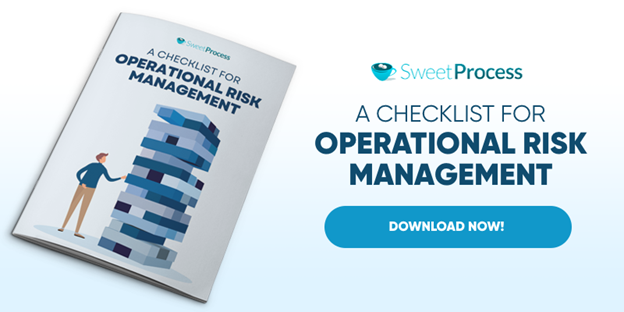Last Updated on January 11, 2025 by Owen McGab Enaohwo
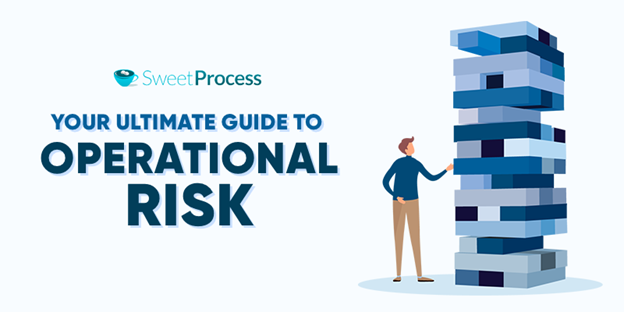
Running a business is not simply about launching products or services, finding customers, serving them, and growing sales. As a business owner, you also have to make a robust plan to manage operational risks in order to succeed. Now the question comes: what is operational risk?
A company invested heavily in cybersecurity tools, buying the latest antivirus, VPN, encryption tools, and web vulnerability scanning tools. But the company didn’t spend enough time and resources on training its employees to stay safe from cyberthreats. Eventually, the company suffered a massive data breach caused by a human error.
The company is fictitious, but the horror of data breach due to human error is real, especially when employees’ mistakes contribute to 88 percent of security breaches. What’s worse, human error is just one of the many examples of operational risk your company faces.
If you want to succeed, you should make a plan to prevent and minimize operations risk.
This definitive guide will unpack everything you should know about operational risk and efficient operational risk management.
What’s more, as bonus content, you can download a free checklist on operational risk management.
Table of Contents:
Chapter One: What is Operational Risk?
Chapter Two: Operational Risk Management
Chapter Three: Developing an Operational Risk Program
Chapter Four: Implementing Operational Risk Management
Chapter Five: Roadblocks to Operational Risk Management
Chapter Six: How SweetProcess Can Help in ORM
Chapter One: What is Operational Risk?
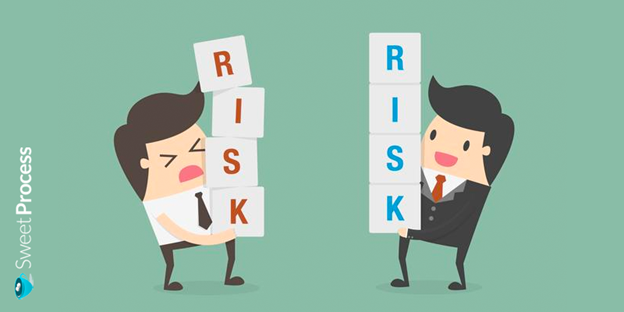
Operational risk is a risk that an organization faces during its day-to-day business activities as a result of a failed or inadequate process, human error, market conduction, violation of a business regulation, or any other operational difficulty.
If not properly managed, any operational risk can cause a big loss to a company in terms of money and reputation.
The Basel Committee on Banking Supervision, which is a group of international banking authorities working primarily to strengthen financial stability worldwide, adopted a common definition for the banking industry. But the definition can be easily applied to other industries as well.
Basel Committee on Banking Supervision offers a definition of operational risk, namely, “The risk of direct or indirect loss resulting from inadequate or failed internal processes, people and systems or from external events.”
Put simply, operational risk is a likelihood of a loss resulting from people’s mistakes, failed or inadequate processes, or external events.
Now that you know what operational risk actually means, let’s explore a few real-world examples next.
Examples of Operational Risk
Here are a few examples of operational risk types:
1. Inadequate Process
A retail store didn’t fully develop its online sales channel. On normal days, the store managed to touch sales targets as customers were flocking in the store daily. When COVID-19 hit and stay-in orders were placed, the store’s online sales channel couldn’t handle the volume. As a result, the store lost sales, revenue, and profit.
2. Human Error
A mechanic of a car repairing company left a small tool in a car’s engine after fixing it. Consequently, the car engine broke down on its very trip outside the garage, causing more damage to the engine. Now, the company’s reputation is damaged, and it has to spend money on fixing the engine to avoid a lawsuit.
3. Information Technology
A critical web server error caused an online retailer’s website to go down for a few hours. The retailer lost money, and the company managing the retailer’s server made its customer unhappy.
4. Process Failure
A customer support company never trained its employees to work from home, though the work could be easily done from home. During COVID-19, when there were travel restrictions, the customer support department of the company couldn’t function properly for many days as employees were not trained enough to work independently at remote locations.
5. Quality Issue
A local soap manufacturing company supplies products to wholesalers in the town. The recently produced batch doesn’t hold the same quality due to the poor quality of one ingredient that looked fine at the beginning.The quality control department found the quality issue before delivering products to wholesalers. But the company suffered a loss nevertheless.
6. Regulatory Risk
A company has failed to be in compliance with any of the government regulations on business. As a consequence, a fine or sanction is imposed. This has hurt the company’s finances and reputation.
7. External Factor
COVID-19 caused supply chain disruptions, decreased customers, and reduced sales. As a result, a company suffered a huge financial loss.
A fire in the company’s warehouse destroyed 75 percent of the goods. Consequently, the company faced a huge financial burden.
History of Operational Risk
In the financial industry, operational risk became known as a critical risk class in the mid-1990s following many big insolvencies in the banking industry, which undermined the confidence in the banking system. Operational risk failures were the main cause of significant losses in these insolvencies. To address the crisis, the Basel Committee, a committee of banking supervisory authority, tabled a proposal to replace Basel I, and the initial proposal introduced an operational risk category and corresponding capital requirements. Currently, the Basel Committee is introducing Basel III that is expected to be fully implemented by 2022.
Now companies from diverse industries have been leveraging the lessons from the banking industry that has been focusing on operation risk for more than two decades. In 2005, the Operational Risk Consortium (ORIC) was founded with a view to changing operational risk data between member firms. The objective of ORIC is to help members strengthen their operational risk functions through sharing risk data between them.
Operational Risk vs. Financial Risk
Operational risk and financial risk are distinctive from each other.
Operational risk is related to loss stemming from failed or inadequate processes, human error, or outside factors.
However, financial risk often means that a company’s cash flow is not enough to cover up its financial obligations, such as loan payments or debts. The reasons for financial risk can be wrong decisions made by financial professionals of the company, poor performance of products/services, etc.
Chapter Two: Operational Risk Management

This chapter will help you understand all about operational risk management.
What is Operational Risk Management?
When you run a company, multiple factors are at play: customers, employees, third-party vendors, and other associates. You cannot expect that all things will be in sync all the time. Sometimes, people or systems fail. Also, external events like fire or COVID-19 sometimes cause business disruptions.
Operational risk management is a process used to avoid, accept, and mitigate risks that a company faces during day-to-day functioning.
This video will explain it more.
The Objective of Operational Risk Management
As the name suggests, the main operational risk management function is to mitigate risks that arise from the daily functioning of a company.
An efficient operational risk management program can help your company reach its business goals while making sure that the company doesn’t face a downfall in the event of any disruption to the operation.
Here are the key objectives of operational risk management (ORM):
- Identifying and analyzing possible risks a company can possibly encounter
- Listing down key risk indicators
- Reducing or mitigating harmful threats
- Leveraging resources efficiently
- Communicating about operational risks clearly within the company
- Assuring stakeholders that their interests will be protected
ORM is a continual process that focuses on acceptance, mitigation, and avoidance of operational risks.
In a nutshell, ORM proactively protects a company by minimizing, eliminating, or mitigating risks.
Principles of Operational Risk Management
There is never smooth sailing when it comes to running a company, regardless of its size. You’re bound to face unfortunate events that have the potential to damage your reputation and cost you money.The success of your company depends on how you deal with these events.
Operational risk managers work toward eliminating risks. If they cannot eliminate risks completely, they try to reduce risks to an acceptable level.
Here are four principles of operational risk management guided by the Naval Postgraduate School (NPS), which can easily apply to any business:
- Accept risks when benefits outweigh costs
- Accept no unnecessary risks
- Anticipate and manage risks by planning
- Make risk decisions at the right level
Starting a company without risks is impossible. To run a company successfully, you should understand and prepare for risks.
The above-mentioned four ORM principles will better guide your risk manager to take the right actions in order to avoid system failures and mitigate unnecessary risks.
Levels of Operational Risk Management
Operational risk management usually has three levels, and these ORM levels help determine the type of operational risk management managers have to employ to run business operations without disruptions.
Let’s explore different levels of operational risk management.
1. In-Depth
In-depth operational risk management is also known as strategic ORM. This level of ORM is deployed to study operational risks and hazards in complex business operations where one cannot easily understand risks. In-depth ORM level is a long process that requires deep research, various analytical tools, and long-term tracking of associated risk and hazard. This level of ORM is typically used in high-visibility risks.
2. Deliberate
Deliberate operational risk management employs experience and brainstorming to assess operational risk and take control measures. As the term implies, deliberate ORM doesn’t wait for an adverse situation to happen so that corrective actions can be taken.
Planning for software failures or systems’ failures, training to minimize technology risks or data entry errors, and preparing for control failure are examples of deliberate applications.
3. Time Critical Risk Management (TCRM)
Time critical risk management is applied when an unplanned event (or risk) occurs during planned business processes/operations. In TCRM, an unplanned circumstance demands decision-makers to act in a time-bound manner.
Checklists, staff briefing, and standard operating procedures (SOPs) are designed to identify areas of risk and tackle them quickly.
State of Operational Risk Management
The complexity and volume of the risks are growing rapidly. Companies that have equipped themselves to better tackle operational failures can benefit more than those that are less prepared to handle operational risks.
According to the 2021 Global State of Enterprise Risk Oversight, 60 percent of respondents believe that the volume and complexities of risks are augmented all over the world. If you focus on the US, 66 percent of companies accept that the volume and risks are increased.
The coronavirus pandemic affected all industries. Forty-five percent of US companies reckon that COVID-19 has changed the nature and type of their top risks since the prior year.
Though the operational complexity and volume of risks grew rapidly, companies are less prepared to float in the current risk landscape.
The report states that only 34 percent of companies in the US have complete enterprise risk management (ERM) in place. Only 27 percent of US companies believe their risk oversight is robust or mature.
Also, not many companies are good at doing risk identification. Only 46 percent of US companies maintain risk inventories at the enterprise level.
Here are some additional findings from the 2021 Global State of Enterprise Risk Oversight report:
- 48 percent of US organizations have formally defined the meaning of the term “risk” for employees
- 60 percent of companies in the US have management-level risk committees
- 39 percent of US companies perceive insufficient resources as their top barrier to effective ERM
It goes without saying that companies will likely lead to failures and missed opportunities in the absence of ORM.
Therefore, you cannot afford to put ORM outside your organization’s strategic objectives.
Chapter Three: Developing an Operational Risk Program
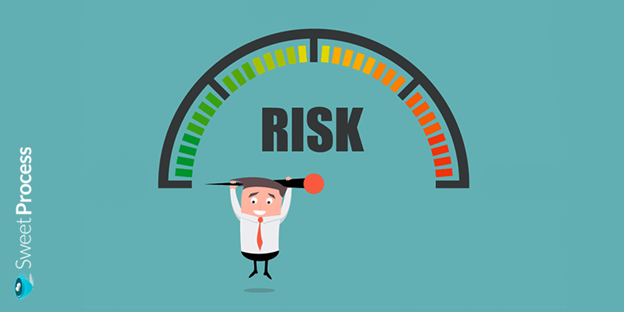
It is imperative for companies of all sizes to develop a powerful operational risk program to protect customer data, company assets, and reputation. Also, an efficient ORM program can avoid or minimize the financial crisis, damaging physical events, regulatory fines, etc.
Wondering how you can build an ORM program in your company?
We will discuss key steps of developing an operational risk program in this chapter.
Promote Value and Function of the ORM
Employee conduct in your company has a big impact on the success of ORM. If you want to develop a successful operational risk management program, you should include each and every employee of your company in the process.
Make a culture to promote the value and function of the ORM. It will strengthen the effectiveness of your ORM program if you’re able to fix some sort of accountability of third-party vendors.
Here are quick tips that can help promote the value and function of ORM:
- Integrate risk management in all decision-making
- Intertwine risk culture and your business value
- Share risk mistakes and lessons
- Build a physiologically safe environment to raise risks
- Create incentive programs to improve and promote risk culture
Leverage Technology to Monitor and Collect Risk Data
Technology now plays a key role in our lives. Be it personal or professional, our world has increasingly become digital. Given that, you should not shy away from leveraging the latest technology to collect risk data and monitor risks.
Machine learning, predictive analytic techniques, and artificial intelligence not only help build complex risk data sets but also save you tons of time. These tech solutions can identify discrepancies quickly.
What’s more, you can explore various operational risk software to find the best fit for your company. These tools will make ORM easier.
Explore Different Methods to Identify and Evaluate Risk
To manage risks, you must first understand what types of risks your company is facing. This is the reason why identifying risks is one of the essential steps of every operational risk management process.
If you’re not able to identify and evaluate risk correctly, all the other steps of the ORM process will not yield the expected results.
So what does risk identification include? Usually, the process involves creating a list of threats and events that can prevent, jeopardize or delay meeting the business objectives.
The following are some key methods to identifying and evaluating risk.
1. Brainstorming
Brainstorming encourages team members to identify possible risks in a “no wrong answer” environment. This method will facilitate you to gather risks quickly. What’s more, this unique approach also helps team members develop on each other’s ideas to find the best controls for these risks.
Now the question comes to whom exactly you should include in the brainstorming process. The answer is: as many employees as you can. With the help of technology, you can easily do it. Create a Skype group or Slack channel for this purpose and encourage your employees to share what they think could be classified as risk.
Brainstorming is a good risk identification method that allows all of your team members to speak and exercise their critical thinking.
2. SWOT analysis
Strength, weakness, opportunities, threat (SWOT) analysis will help you know the weaknesses and threats your company is having. Then you can analyze these weaknesses and threats from the operational risk perspective.
For example, you discover during SWOT analysis that there is something wrong with products/services because you are receiving incremental customer complaints. Too many disgruntled customers are a risk. Not only can you lose sales but also you can get sued for poor products/services. You should proactively look into why you’re getting so many complaints.
3. NGT Technique
The NGT, or nominal group technique, is another type of brainstorming to identify and measure operational risk. In this method, you invite your team members to write down what could be a risk without discussing their ideas with each other. After that, you organize these possible risks on a chart on a whiteboard, removing overlapping items. The NGT technique offers a more compressive approach than brainstorming to identify risks.
Like brainstorming, you can use this technique easily with the help of technology. Just ask your team members to share with you what they consider risks through emails. And then you can have a group session to discuss the findings of the NGT exercise.
4. Checklist Analysis
The checklist analysis is an easy-to-implement method for risk assessment. In this method, you analyze tasks or processes against historical data of risks.
Here are steps to conduct checklist analysis in your company:
- Define a process/processes for which you have to conduct a risk assessment
- Make a checklist of risks (safety, environment, regulations) based on historical data
- Work through the checklist (analyze the defined process/processed against risks)
Checklist analysis is used along with other risk assessment methods to better identify and measure operational risk.
Reduce Risk Exposure
Whether you’re a solo business owner or you are running a company with hundreds of employees, reducing risk exposure should be your top priority. Greater risk materialization can sometimes make your company standstill. If you’re running a financial institution, too many risk events can put you out of business.
Many companies often spend huge resources on identifying risks and managing them. But this is not the right ORM practice. For efficient operational risk management, you cannot ignore the importance of reducing risk exposure. We have listed a few critical ways to reduce risk exposure.
1. Minimize Equipment Failures
Nowadays, companies depend a lot on technology to function. Regardless of the size of your company, you’re likely to lose revenue in the event of equipment failures.
Therefore, it is crucial that you should be proactive in:
- Minimizing equipment failures
- Ensuring that backup plans are ready if there is any failure
If your company depends heavily on information technology (IT) infrastructure, you should always keep your software and hardware up-to-date. Make sure that you use robust cybersecurity for your IT resources.
Regular maintenance can keep many failures at bay for companies employing machines with moving parts.
2. Reduce Third-Party Risks
In today’s time, your company cannot function alone. You rely on other companies or third-party vendors for supplies, shipping, and others to run your business.
To reduce your exposure to risks, you should work toward minimizing common third-party risks such as accounting errors, miscommunications, delivery failures, incomplete legal documents, etc.
Whenever you’re dealing with third-party vendors, you should:
- Double-check all the figures
- Ensure invoices are correct
- Complete legal work on time
Always make sure that you and third-party vendors are on the same page when it comes to business dealings.
3. Get Familiar with Regulations
Your company needs to comply with federal, state, and local regulations enforced by legislative bodies. Failing to do so can attract heavy fines. In the worst case, you may be forced to close down your business.
Therefore, you should take proactive steps to meet your legal obligations. Knowing various business laws, rules, and regulations can also help you take advantage of any benefits they offer.
4. Have Adequate Insurance
Disasters and accidents do happen. Your employee can get hurt even if you follow the best employment practices, a disgruntled customer can file a suit, a natural disaster can damage property, etc. You cannot completely avoid these unfortunate incidents. Unless you have a boatload of cash to handle them, these events can break your finances. So it is imperative that you take adequate business insurance to handle these risks.
5. Train Your Employees
Employees often play the first line of defense against risks. So you must train your employees to avoid common workplace risks.
Here are five risks that you can avoid through training your employees:
- Reputation and client risks
- Auditing risks
- Financial reporting risks
- Data breach risks
- Occupational health and safety risks
6. Partner ORM with Other Organizational Functions
If you want to boost the success of your operational risk program, you should partner ORM with organizational functions. A disjointed ORM program that has been brought as a reactive function in response to compliance and regulations doesn’t tackle risks effectively.
Chapter Four: Implementing Operational Risk Management

When you consider implementing an operational risk management program, you have to first hire an operational risk manager.
An operational manager is someone who is trained and certified to identify and limit the risk linked with a company’s operations. He/she will assess business operations, identify issues, prepare reports on findings, create/implement/analyze controls, etc.
How many operational risk managers you need depends on the size and nature of your organization. If you’re a big company operating in hazardous areas, you may require more than one operational risk manager.
Benefits of Operational Risk Management
Well-structured, efficient operational risk management offers numerous benefits, including:
1. More Capital for Income-Earning Activities
Every risk taken often requires operational risk capital. So having a robust ORM program can help you have more cash available for income-earning activities.
2. Improved Decision Making
It is not easy to make decisions where risks are involved. However, having a robust ORM program can put stakeholders at ease and improve decision-making on critical matters.
3. Better Compliance
Needless to say, regulatory compliance is a mandatory part of running a company. Operational risk management has an important role in ensuring all regulatory compliance.
4. Reduced Operating Cost
The key operational risk management function is to identify risks even before they cause any loss. A well-structured ORM process reduces the number of risks manifold, reducing the operating cost of the company.
5. Increased Employee/Customer Satisfaction
An ORM helps your company minimize or eliminate risks associated with people, processes, and systems. Employees care for workplace safety and the work environment. Customers also want to work with a company that is serious about the quality of its products/services. So ORM will increase employee/customer satisfaction.
6. Lowered Volatility
Large operational risk events can have a severe impact on your company. Many a time, these risk events can hinder your company in meeting desired earnings objectives, resulting in the lower market value of the company. A robust ORM program lowers volatility as it helps minimize/eliminate risks.
Five Steps of Operational Risk Management
There are five basic operational risk management steps, which are implemented to prevent/minimize risks.
1. Identify Risks
It goes without saying that there are many types of risks businesses face these days. The first step of the ORM process is to identify risks a company can possibly face while operating.
These risks can include fraud risk, regulatory risks, credit risk, internal fraud, external fraud, errors due to the human factor, legal risks, market risk, and many more. The risk is anything that may prevent your company from achieving its objectives. Ideally, you should include all of your employees in the risk identification process.
Of course, you cannot make a list of all the risks. But try to note down as many as you can. If your company is employing any kind of operational risk management software, feed the data into that system. This will help every stakeholder in the organization to be aware of potential operational risks.
2. Assess/Analyze Risks
Once you have identified risks and fixed key risk indicators, the next step in the operational risk management process is to analyze or assess risks. This step is critical because you cannot efficiently make risk decisions or deploy controls if you don’t know risk levels or the types of risks you’re facing.
The main objective of assessing or analyzing risks is to figure out the scope of risks. Establish a link between the risks and different factors within organizations, and try to understand how many functions will get affected by these risks. There are a few risks that can impact one or a few functions, but a few other risks can, if occurred, cause a complete halt in your company.
Concisely, you should take a qualitative and quantitative approach while assessing operational risk, keeping severity and occurrence in mind.
3. Make Risk Decisions
You have identified risks, assessed risks, and fixed key risk indicators. Now comes the time to make risk decisions.
Here is how you can do it:
- Identify risk management strategies
- Determine the effect of controls on risks
- Make a decision on how to proceed
Before you start identifying risk management strategies, be sure the risk is necessary. The person who can balance the risk against potential benefit and value should make this decision. However, that person must collaborate with team members who can be impacted by the decision.
When it comes to identifying risk management strategies, you have these four options:
Transfer
In this option, you shift some or all of the risks to another company, asset, or entity. For example, you can use a cloud storage service from another company, and it will transfer data breach risk to the cloud storage company.
Avoid
When you decide to avoid unnecessary risk, you prevent or bypass the risk. For example, you can pick a reliable but costly vendor over a cheap vendor that doesn’t have a proven history of satisfying work.
Accept
If the benefits of the risk you’re going to take outweigh the costs, you can accept the risk and move forward. For example, you open your business to some cyber risks when you allow your employees to work remotely, but remote work offers multiple benefits to both you and your employees. Improved employee health, increased productivity, and cost savings are just a few to mention.
Control
Going for the control option means you will take deliberate actions to reduce the potential for loss, manage the risk to an acceptable level, and enhance the potential for benefits. For example, the use of a VPN, antivirus, and multi-factor authentication can strengthen the cybersecurity of your remote employee.
4. Implement Controls
Once risk decisions are made, the next step of ORM is to implement controls that are designed to tackle the risk in question. It is worth noting that the objectives, rationales, and activities of controls must be clearly documented to avoid any confusion during the execution of controls.
If it is discovered that the risk is too high and the implemented controls in this step are not as effective as they were thought, you must revisit the Step 3 decisions to do course correction.
You may have to develop additional or alternate controls to avoid control failures and tackle the risk efficiently.
5. Supervise (and Watch for Changes)
The final step in the operational risk management process is to supervise. As you and your employees are going to implement controls, you cannot rule out any error caused by the human factor.
Therefore, control monitoring is critical. Keep an open eye for any change required in ORM. If the need arises, you should correct ineffective risk controls to maximize success.
Certification in Operational Risk Management
If you’re interested in gaining a deep, practical understanding of the operational risk management frameworks, you can consider getting certification in operational risk management.
Here are some popular certification programs in ORM:
1. Certificate in Operational Risk Management
This certification program has been brought to you by the Institute of Operational Risk. Having received this certificate means you will have a deep understanding of the fundamentals of operational risks, operational risk management, ORM tools, the regulatory treatment of operational risk, and much more.
2. ORM Certificate from PRMIA
The PRMIA Operational Risk Management (ORM) certificate is ideal for those who are working in the finance sector. Successful candidates will be better equipped to plan and implement efficient risk management strategies.
3. Certified Operational Risk Professional
This certification is useful for all staff in companies that want to stay on top of operational risk management. It is based on Basel Accords, the COSO framework, and ISO 31000: 2009 Risk Management Principles/ Guidelines.
Tools for Operational Risk Management
Companies are using operational risk software applications these days to identify, assess, and address operational risks across all departments.
These applications can prevent losses that can be caused by inconsistent business processes, unregulated business practices, human errors, etc.
Following are the leading operational risk management tools:
1. Dataminr
Dataminr Pulse provides you with the early indications of high-impact events and tools to help you collaborate and act faster to prevent/downplay those events. With Dataminr Pulse, you can better protect your virtual and physical assets, brand, and people.
2. LogicGate
Risk Cloud from LogicGate is a cloud-based platform, offering a suite of risk management applications. With Risk Cloud, you can easily create a risk management process because the system collects everything from sales and marketing activities to finance and vendor interactions.
3. Camms.Risk
Camms.Risk offers an integrated approach to governance, risk, and compliance. This robust tool can help you make the right decisions.
Its capability includes risk management, compliance management, workplace health and safety, incident reporting and monitoring, cyber and IT risk management, and more. Also, Camms.Risk does compliance management so you will not face any regulatory fines.
4. OneTrust
OneTrust is a widely used platform for operationalizing data governance, privacy, and security. Its main highlights include privacy management solutions, third-party risk solutions, GRC solutions, data governance solutions, ethics and compliance solutions, and more.
5. SAI360
Enterprise and operational risk management from SAI360 will help you make better decisions based on facts. With this advanced tool, you can have a 360 view of risks across operations and enterprise. As a result, you can better manage operational risks. Its capabilities include risk and control assessment, risk mitigation, loss and incident management, indicators monitoring, etc.
Features to Look for When Hiring an ORM Company
If you find it overwhelming to handle ORM in your company, you can delegate it to an ORM company.
Here are some key features you should keep in mind when hiring an ORM company:
1. Intuitive Dashboards and Reports
Make sure that the company offers an intuitive dashboard to help you monitor the status of control design and test results. Also, mandatory reporting should be made available in easy-to-read graphical charts.
2. Risk Control Self-Assessment
You should be able to evaluate inherent risks, assess the effectiveness of controls, and monitor residual risk. Also, you should be able to plan and create self-assessments and control tests with pre-defined questionnaires/surveys.
3. Centralized Control Library
The company should build a library of control and map them to risks, regulations, and processes.
4. Operational Loss Event Management
The company should be able to help you:
- Track and report on loss events
- Perform root-cause analysis
- Establish accountability across your company
- Automate the review and analysis workflow for loss events
5. Continuous Monitoring
The company should collect risk and control indicator data and send automated notifications to keep you informed.
Chapter Five: Roadblocks to Operational Risk Management

Operational risk management plays a key role in the success of any organization. Still, only one-third of the US companies have complete enterprise risk management in place. That said, a large number of companies have yet to implement ORM programs.
Why do companies struggle to adopt ORM? What are the roadblocks to operational risk management?
We have listed key challenges below:
1. Lack of Resources
The most common reason why companies struggle to support a risk culture that empowers all stakeholders to accept and address risks is the lack of resources.
Needless to say, it requires trained professionals and investment in tools to build a robust ORM program. A company that just has started might not have sufficient resources to invest in ORM.
2. Navigating the New Normal
The coronavirus pandemic has changed the way companies do their businesses. With remote working being the norm, it has increased cyber threats. Also, remote work makes it difficult to track the wrongdoing of remote workers, which could turn into risks. All of these factors have added more hurdles to the ORM process that is inherently complex.
3. Hidden Function
Sometimes it happens that companies include risk management in their IT, compliance, or other functions. As a result, operational risk management suffers from an identity crisis.
In order to create effective ORM, you must not feel complacent just because you’ve made a plan to take care of risk in IT or compliance. Instead, you should consider taking a holistic approach toward ORM.
4. Lack of Consistent Methodology
Measuring and assessing risks determines the success of any ORM program. So the lack of a consistent methodology to assess risk in any area can make it difficult to accurately create an organization’s risk profile.
It is always better to have some protection than no protection. Therefore, you should try to assess risks as efficiently as you can do and create a risk profile for your company. You can later update this risk profile as you come to learn about new risks.
5. Lack of Technological Awareness
Risk management cannot be done on mass spreadsheets and a few point solutions. It is a complex process involving advanced tools. The lack of technological awareness across all stakeholders is a big challenge in creating an efficient operational risk management program. What’s worse, technology is changing rapidly, which has made the ORM process varied and complex.
Also, it is not easy to establish standard operational risk terminology that a company can use moving forward. This further affects an efficient risk and control assessment.
6. No Control on Third-Party Risks
Most companies these days depend on third-party business units to function. These vendors pose significant risks to companies. So, it is super challenging to create a good ORM program that can also handle third-party risks.
7. Disconnected Systems and Programs
A good number of companies start ORM programs as a reactive function. ORM programs are often not synced with other systems and programs. Instead, they can be manual, disjointed, and overly complicated.
8. Lack of Communication and Education
ORM is not the job of risk managers only. You should make sure that all stakeholders not only understand the importance of operational risk but also become aware of the consequences of operational failures. Without all stakeholders being well-informed on risks and consequences, you cannot leverage ORM at the full scale.
Chapter Six: How SweetProcess Can Help in ORM
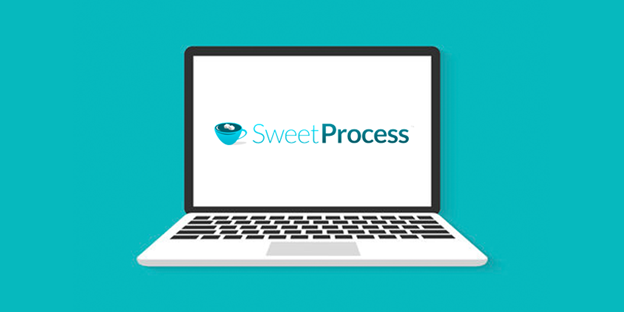
Excellent documentation is a must for the implementation of effective operational risk management. This is because documentation helps in both delivery and message mechanism.
You want to document methodology to identify risk, possible risks, and processes to deal with those risks.
What’s more, employees are less likely to make common mistakes if processes, procedures, and policies are well defined and documented.
For example, here’s how to document bank policies and procedures to improve employee performance.
How can SweetProcess help you?
SweetProcess makes it easy to document processes, procedures, and tasks in one place. As a result, you can focus more on things that move the needle.
Here are a few of the many ways you use SweetProcess in ORM:
- Document procedures and processes to empower employees to know the right, safe way to do their jobs, minimizing risks
- Create policies and directly link to policies from within process and procedures for better compliance of business’s rules and regulations
- Create actionable tasks for your risk management team to follow
- Create a knowledge base for known risks and how to avoid them
- Collaborate in real-time to identify risks
- Combine multiple ORM procedures to have an overarching workflow
In short, SweetProcess is an indispensable tool that will not only make the ORM process easier but also save time.
Here is more about how SweetProcess works as a tool to document processes and procedures.
How Does SweetProcess Work?
SweetProcess is a great tool to document business processes. Let’s explore the following case studies to know it yourself.
When Stanley Kolosovskiy from Atlantic Sapphire was entrusted with a task of transferring operational knowledge between facilities, he faced a unique challenge since his colleagues didn’t have a background in computers. What’s worse, they were not process-oriented. Stanley tried a few workflow software applications but found them difficult despite having a minor in computer science and being an ISO 9001 certified auditor. His search for a good tool ended with SweetProcess.
Stanley himself said, “I found a lot of the software funky. I went on a research spree to find what we could use and then I found SweetProcess. It was the most intuitive software that I found that basically anybody can use.”
With SweetProcess, Atlantic Sapphire successfully streamlined business process documentation, seamless employee boarding and training, and decentralized knowledgebase.
Kevin Trapp, director of operations at Forensic Analytical Consulting Services (FACS), an environmental health consulting firm, was bombarded with employees’ questions on a daily basis, leaving him with no time to do productive work. The company wanted to make its employees independent by offering them clearly defined procedures. SweetProcess changed the game as the company was able to document business processes effectively and create a central knowledge base.
SweetProcess also helped Liston Newton Advisory, a B2B financial service and accounting practice tame organization chaos. The company was able to streamline and organize its procedures and policies to make them easily available to employees. SweetProcess also helped the company do faster onboarding and create oversight in terms of procedures created, tasks assigned, and employee KPIs.
These real-world case studies prove that SweetProcess is an awesome tool to document processes and procedures.
Try SweetProcess yourself. Click here to start your free 14-day trial. No credit card is required.
Conclusion
Operational risk management is critical for the success of your company. Preventing and minimizing risks can save your company both time and money, which you can use to focus on growth-driving activities.
An easy-to-use documentation tool like SweetProcess can make the ORM process easier because you can document procedures and policies efficiently to let employees know the safe ways to perform their job functions. In addition to building a knowledge base of known risks, you can also create actionable tasks for your ORM team with the help of this powerful tool. Click here to explore more how swiftly SweetProcess can take your ORM process to the next level.
Download our checklist to guide ORM in your company.
